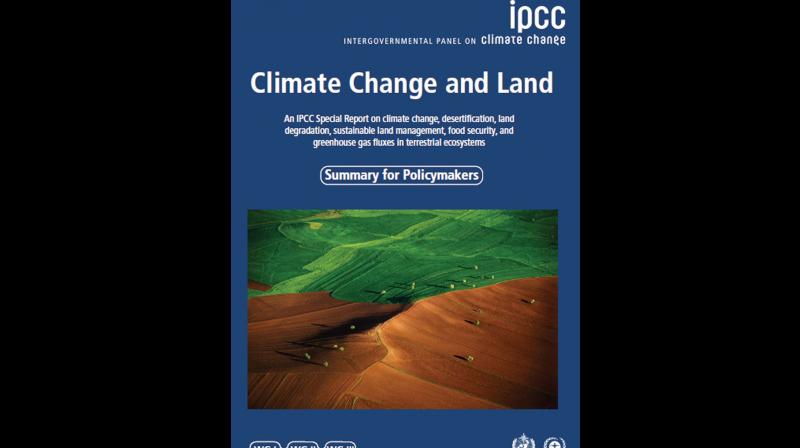Be warned of land use: IPCC

Kochi: The report of Intergovernmental Plan on Climate Change (IPCC), an intergovernmental body of the United Nations, on Climate Change and Land released on August 8 contains a timely warning for places like Kerala to put an end to the practice of treating land as an infinite resource for exploitation to fulfill the material needs of human beings alone.
The floods and land-slips that devastated the state in 2018 and 2019 have clearly demonstrated the fragile and vulnerable nature of the land mass in Kerala with its distinct geographical characteristics marked by mountain range, midland and long coastal stretch in a narrow strip of land.
The 43-page summary of the 1,400-page voluminous report specifically targets policy makers. The summary does not specifically mention Kerala but has cited the land degradation taking place in the central Indian region. In central India, the report says, "there has been a three-fold increase in widespread extreme rain events during 1950-2015, which has influenced several land degradation processes, not least soil erosion". The increase in the frequency of the recurrence of extreme climactic events is one of the major markers for the fallout of climate change. The floods and land-slips in Kerala are a sign of the repeat of extreme climactic events and clearly show the state needed to take urgent steps to mitigate negative fallout from the impact of climate change.
The report, specifically focusing on the impact of global warming on land, provides a detailed description of what went wrong and how remedial measures could be initiated.
Key findings from the Summary for Policymakers (SMP) are structured in four parts: a) people, land and climate in a warming world; b) adaptation and mitigation response options; c) enabling response options; and d) action in the near-term.
A: People, land and climate in a warming world: Land provides the principal basis for human livelihoods and well-being including the supply of food, freshwater and multiple other ecosystem services, as well as biodiversity. Human use directly affects more than 70 per cent (likely 69-76 per cent) of the global, ice-free land surface. Land also plays an important role in the climate system.
B: Adaptation and mitigation response options: Many land-related responses that contribute to climate change adaptation and mitigation can also combat desertification and land degradation and enhance food security. The potential for land-related responses and the relative emphasis on adaptation and mitigation is context-specific, including the adaptive capacities of communities and regions. While land-related response options can make important contributions to adaptation and mitigation, there are some barriers to adaptation and limits to their contribution to global mitigation.
C. Enabling response options: Appropriate design of policies, institutions and governance systems at all scales can contribute to land-related adaptation and mitigation while facilitating the pursuit of climate-adaptive development pathways. Mutually supportive climate and land policies have the potential to save resources, amplify social resilience, support ecological restoration, and foster engagement and collaboration between multiple stakeholders.
D. Action in the near-term: Actions can be taken in the near-term, based on existing knowledge, to address desertification, land degradation and food security while supporting longer-term responses that enable adaptation and mitigation to climate change. These include actions to build individual and institutional capacity, accelerate knowledge transfer, enhance technology transfer and deployment, enable financial mechanisms, implement early warning systems, undertake risk management and address gaps in implementation and up-scaling.
The report has details on how to formulate a well-conceived strategy to prevent degradation of land and the cascading impact of it on the community.
The policy makers in Kerala, harping on the theme of creating a New Keralam in the wake of 2018 floods, can gain lessons by having a close reading of the SMP, if not the full text of the report.
(A summary of the report and its key findings published in the web journal Carbon Brief under a Creative Common license by Daisy Dunne, Josh Gabbatiss and Robert Mcsweeney helped in filing the report. It is available at https://www.carbonbrief.org/in-depth-qa-the-ipccs-special-report-on-climate-change-and-land)

